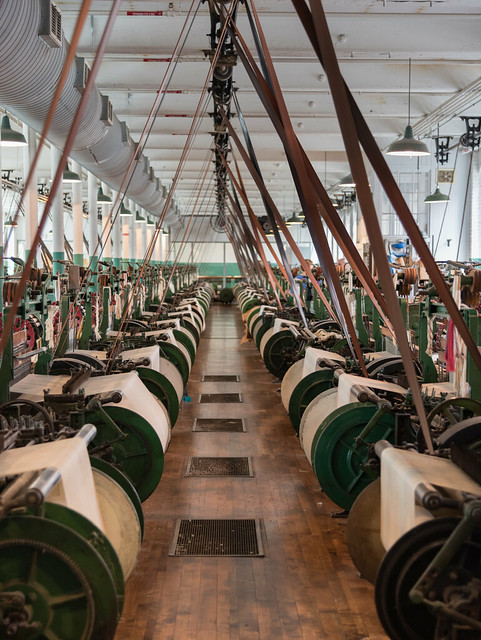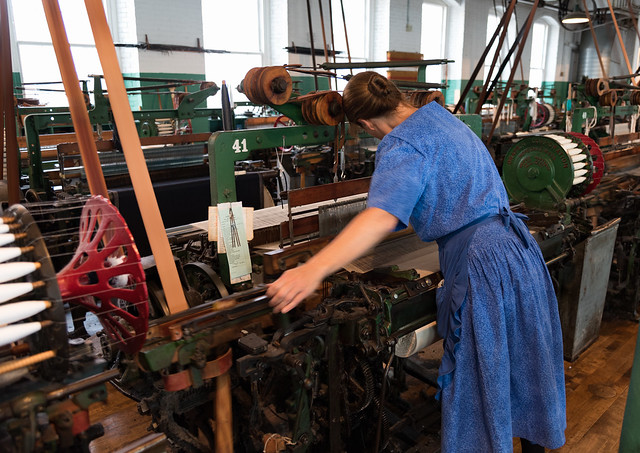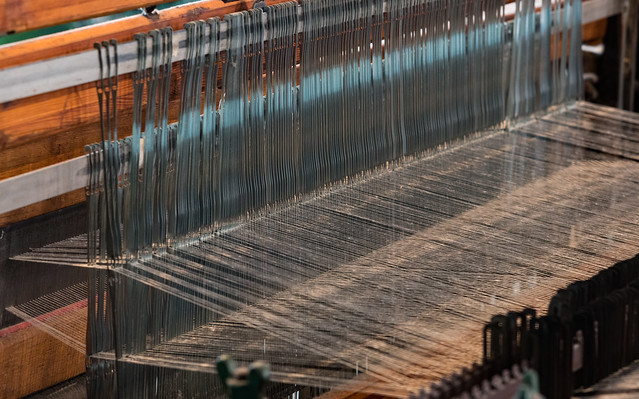I have to say the highlight of my trip was the Boott Cotton Mills Museum. Boott was a large mill producing fabric. At the height of production they brought in raw cotton, milled it into thread, which fed the looms for weaving. The second floor of the mill is now a museum, with exhibits on the history and the process. There is some history on line here and here.
But the best part of the museum is on the first floor - the floor is lined with automated looms.
Rows of automated looms. Originally driven by water power. the shaft on the ceiling (which belt drives each loom) is now driven by an electrical motor.
Machine driven looms were put on the first floor of mills due to the vibrations they caused. (They used to be on the upper floors as production moved up. The vibration caused owners to reverse the process, putting the looms on the first floor.
The machines themselves are fascinating. Effectively automating all the parts of a standard hand loom. As looms became more automated, one girl could man more and more looms, reducing labor costs for the manufacturer.
NPS worker, in traditional dress of the time, tends to a loom
But the sound must have been deafening. The museum had about a dozen looms going, and the noise was enough you need to wear ear plugs while visiting. But the machines are fascinating to watch. A cam driving the heddle frame. Lever arms slamming the shuttle back and forth. The batten firming the thread in place as the cloth is slowly created.
The machines are mesmerizing to watch, but also offered opportunity for some unique photographs. I definitely need to go back with the tripod to get some more photos of both idle and active machines. SO many parts and gears that are demanding to be photographed.
The museum is definitely worth a visit!!
Two rows of heddles. Each lifts or lowers a row of thread so the shuttle can be passed between,
thus weaving your cloth.
Loom in action
I turned the sound down. And this was only a fraction of the machines in operation.
More photos can be found on my Flickr album.


